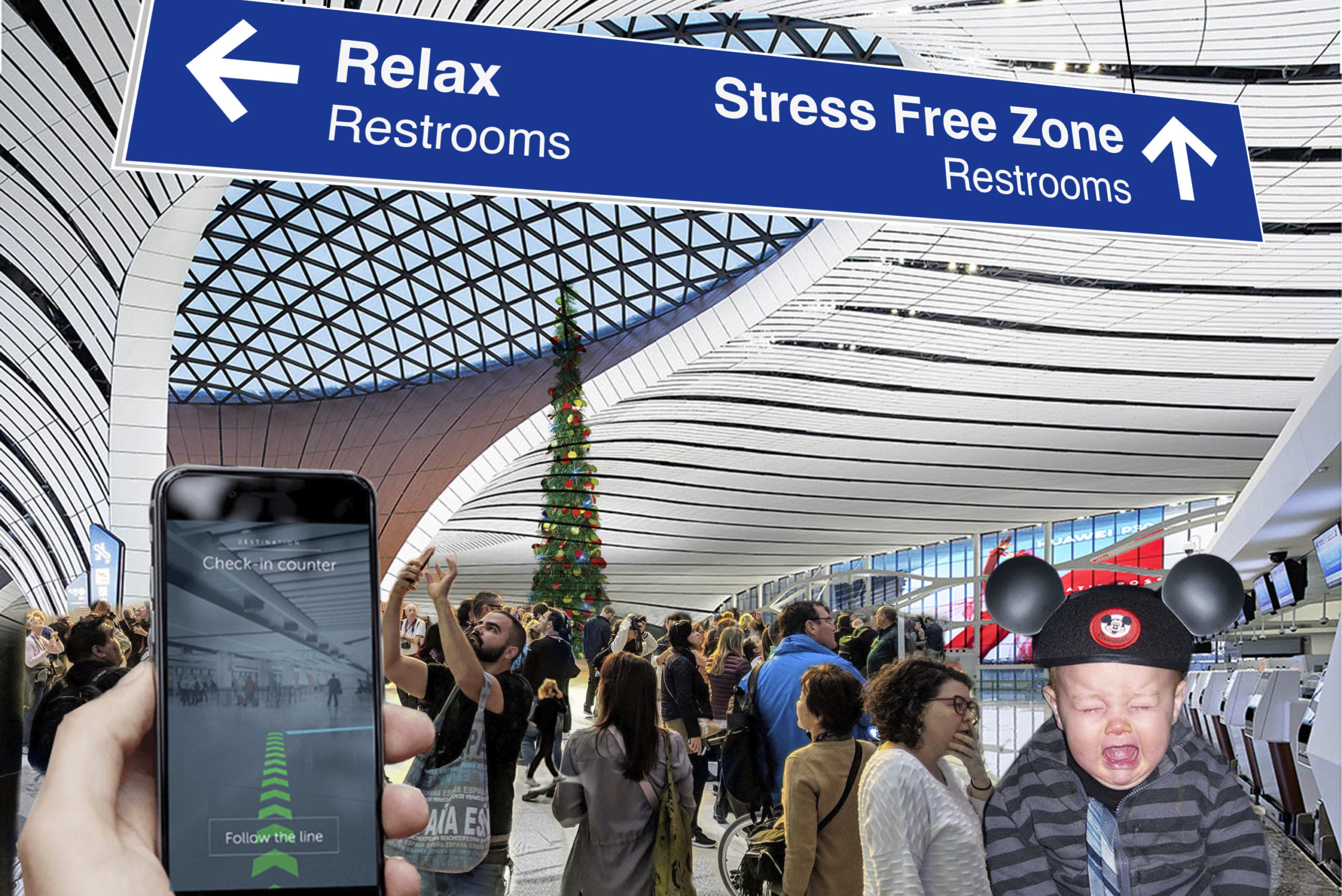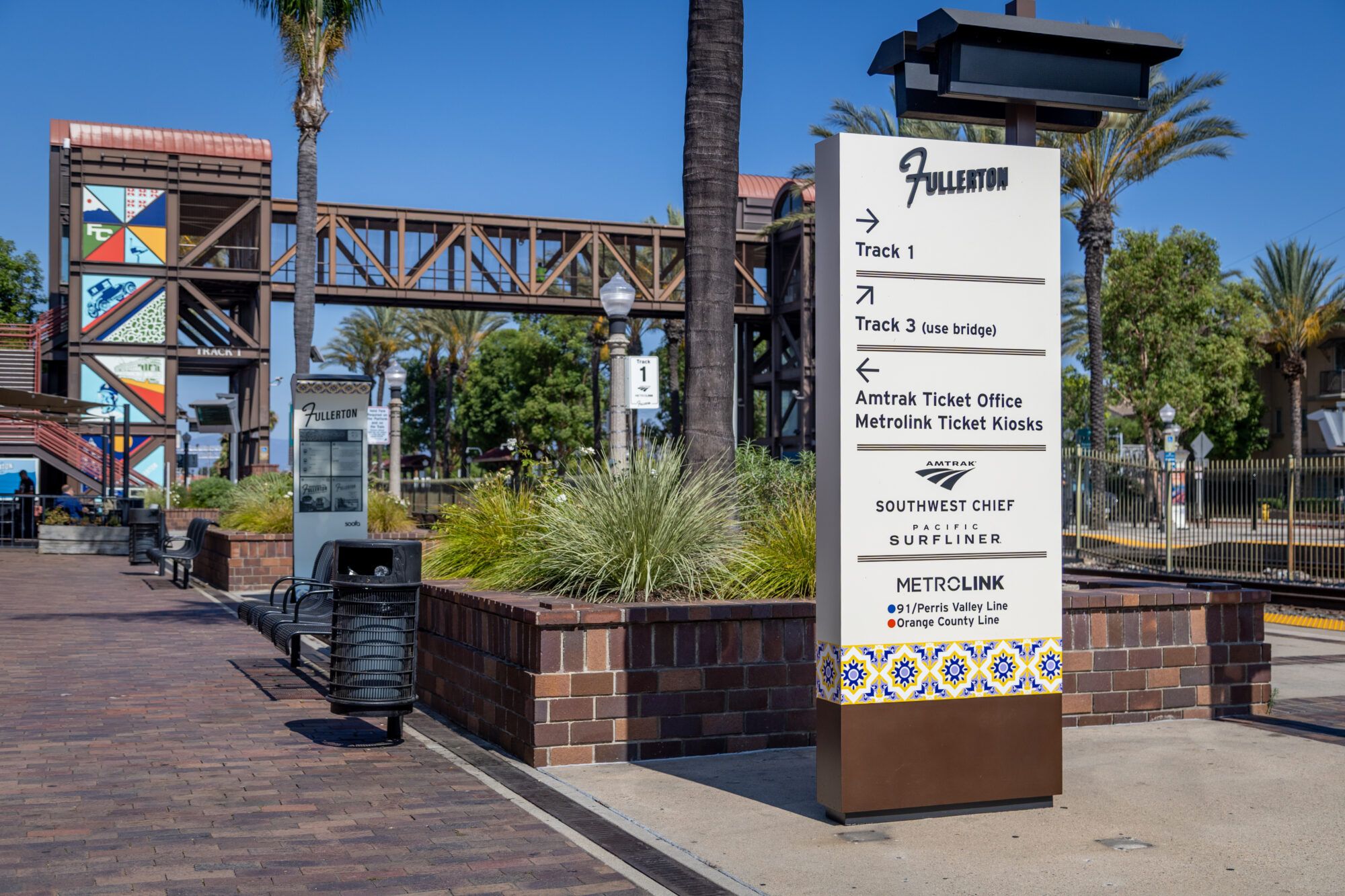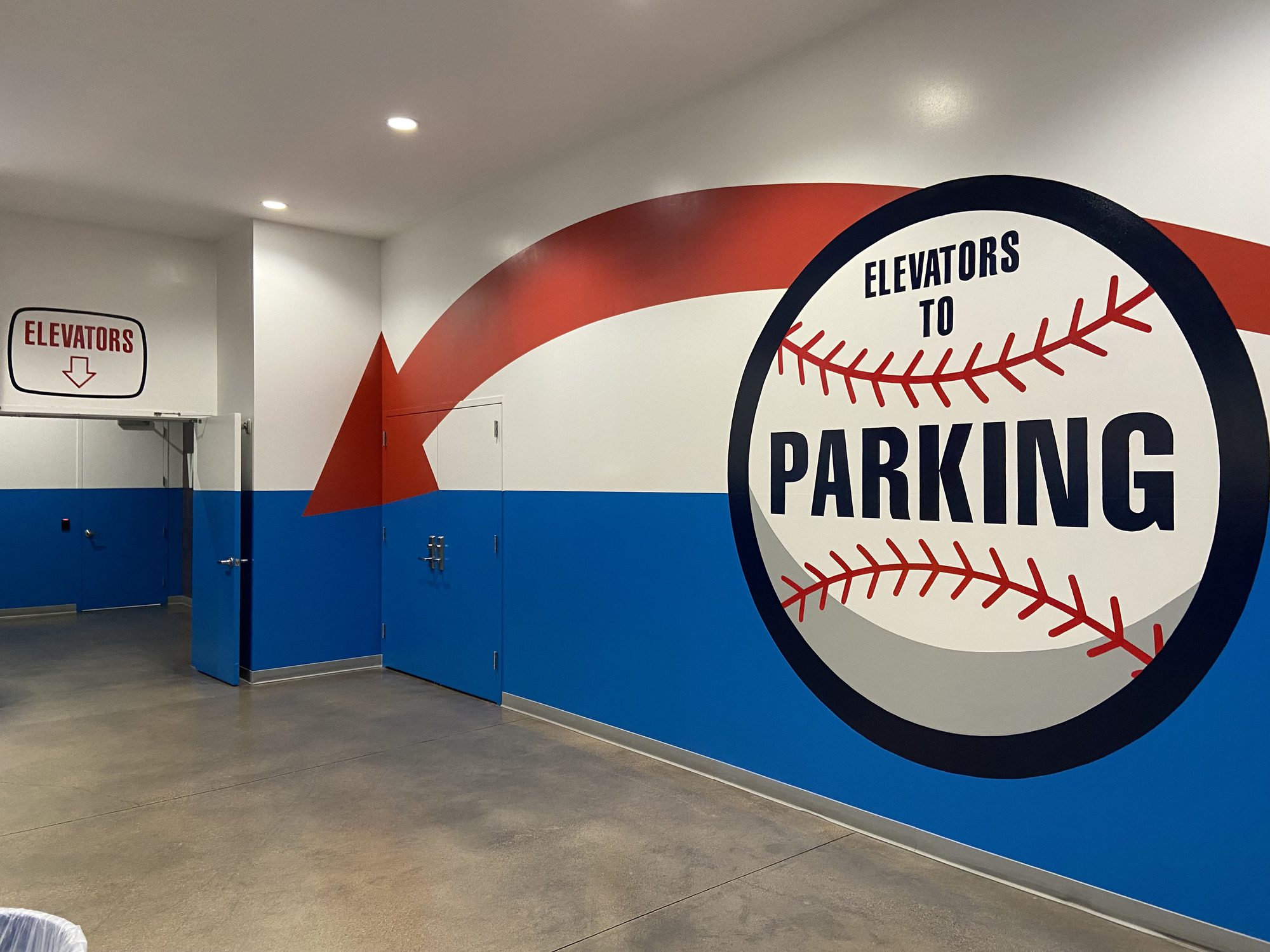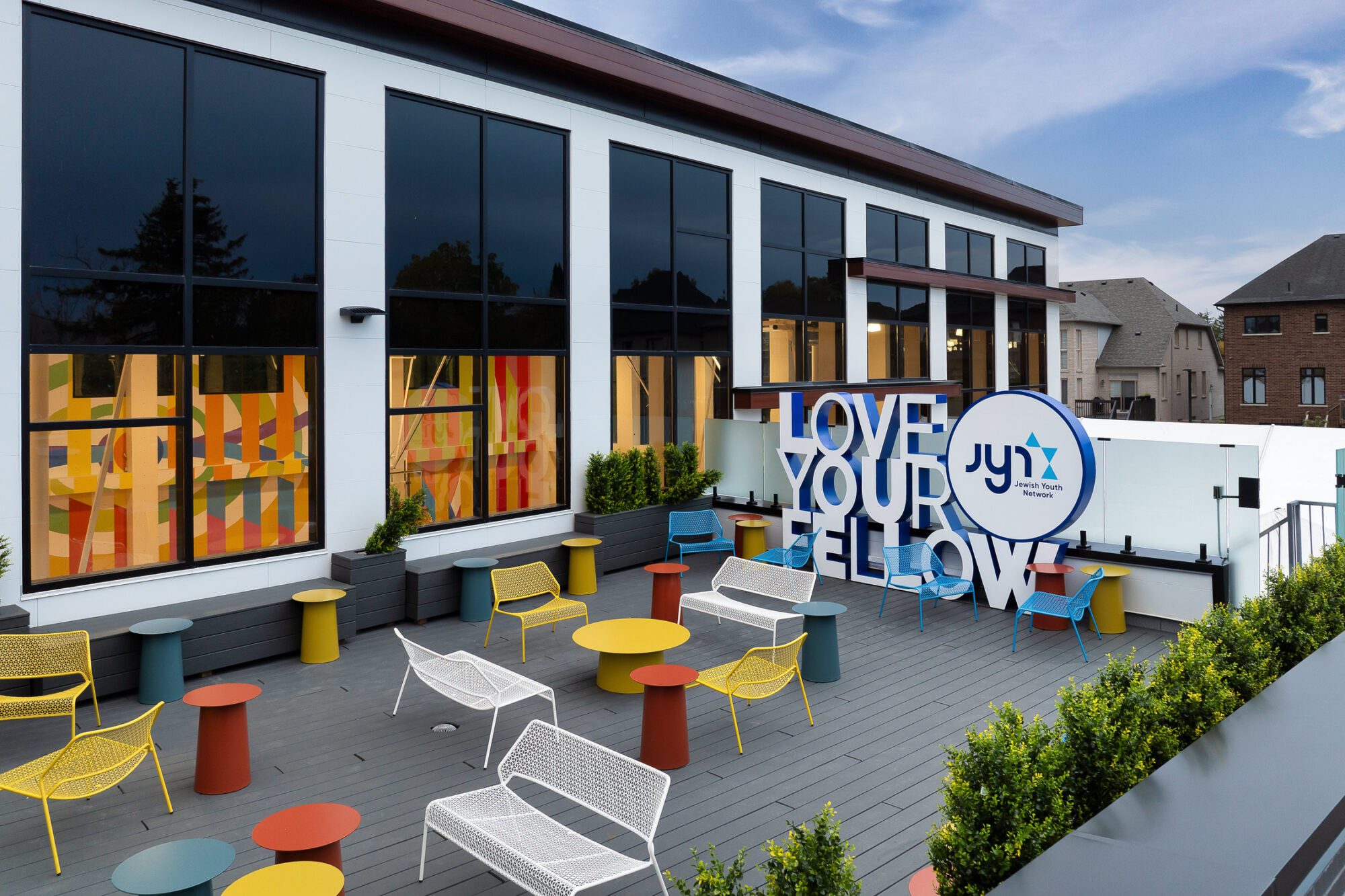Imagine that you’re ready for your trip. Your family is with you, and you’re eager to head to the airport. But you’re anxious too. Where are you going? Where do you park? Where is the terminal? Ticketing? Baggage? Security? Gate? You have enough stressors in your life; all you want is to get to your gate on time.
A map app helps you get to the airport, but once you’ve arrived, it’s no longer helpful. Now What? You instinctively look for signs and landmarks to take you the rest of the way. You depend on signs – they guide you in most areas of your life, and when this familiar and easy-to-use form of wayfinding is done well, you arrive at your destination, stress free.
When asked by Passenger Terminal Magazine to contribute an article for its April, 2022 issue, Selbert Perkins Design Co-Founder and Partner, Clifford Selbert chose to address a question on the minds of many these days, and that is; Analog vs. Digital Wayfinding, as the analog/digital sign landscape is evolving quickly. Original Article Here
Analog (Static) signs have always been the standard for wayfinding and are the backbone of any effective wayfinding system because people understand how to use them. With familiar and universal iconology, both the words and graphics of these analog signs assist travelers in finding their way instinctively and relatively stress free, regardless of their primary language.
Landmarks and heads-up maps further assist travelers and help them to quickly orient themselves spatially within an environment with confidence. And when done well, the traveler enjoys the experience, further reducing their level of stress.
Digital signs and apps can augment, rather than supplant the analog wayfinding system. They can enhance the user experience by providing live, dynamic information in realtime, informing travelers of changes and up to date information.
A positive airport wayfinding experience is critical to the success of any airport or transit facility. As airports expand into the future, successful integration of digital and analog signage will grow to better assist travelers, enhance the airport experience, and reduce stress.
Lowered stress for passengers translates to a positive experience for all. Airlines are happier because they have happier passengers, with fewer stress related/induced incidents.
Reduced stress and strain on employees means airport operations become more efficient and sustainable, and the airport operator can focus their resources on airport operations with greater efficiency.
Hybrid analog/digital signage wayfinding systems will be the standard for a successful airport wayfinding experience now and in the future; creating happy travelers, efficient and sustainable operations, reduced passenger stress, and a positive and profitable travel experience for all.



